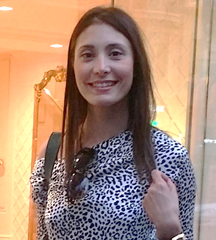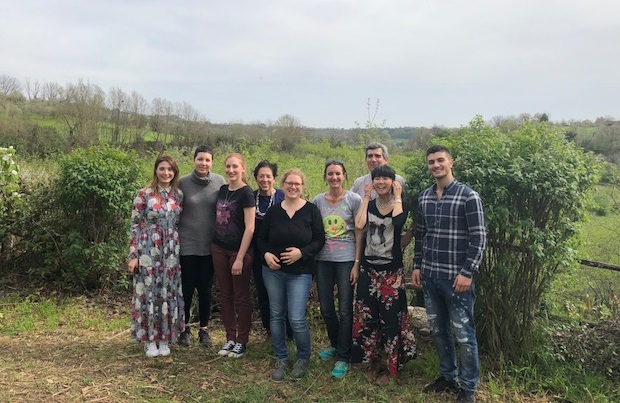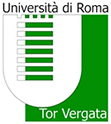Profile
 |
Dr. CLAUDIA SCATIGNO
Email |
Biography
Biography
Place of birth: Foggia, Italy
Date of birth: 31/5/1983
Citizenship: Italian
e-mail: claudia.scatigno@uniroma2.it
Current position: PhD student at Department of Chemical Science and Technologies, University of Rome “Tor Vergata”
Claudia Scatigno is an experimental chemist and applied physicist to the Materials Science (Cross-Disciplinary Approaches to Heritage and Landscape) and Environment Safety (macro-microenvironment). Her research focuses on the Inelastic Neutron Spectroscopy (TOSCA beamline) at the pulsed ISIS neutron facilities (Rutherford Appleton Laboratory – Didcot, UK), Multivariate Data Analysis and Neutrons Simulation. She is part also of the VESPA project (instrumental development, benchmarks individuating).
Prizes and Awards
[2018] PhD Excellence Award 2017
[2012] Degree Excellence Award 2012– Citation: “Excellent graduate Faculty of Mathematical, Physical and Natural a.a 2011-2012″
GRANTS
[2016] Fellowship for study sojourns by trainee researchers from foreign universities engaged in a jointly supervised doctoral thesis, University of the Basque Country (UPV/EHU)
[2015 – 2016] Fellowship for Student Mobility for Traineeship (Erasmus+), University of Rome “La Sapienza”
[2014 – 2017] Doctoral fellowship at Eart Science Dept. University of Rome “La Sapienza”
[2014 – 2015] Fellowship for Student Mobility for Traineeship (Erasmus+), University of Rome “La Sapienza”
[2013 – 2014] Fellowship for study sojourns by LLP/EP (Lifelong Learning Programme/Erasmus Placement), University of Rome “La Sapienza”
[2011 – 2012] Fellowship at Museum Herbarium, Environmental Biology Dept. University of Rome “La Sapienza”
Research
Research
Since 2008 CS is a Conservation Scientist for the preservation of Cultural Heritage. She carried out numerous surveys of monitoring study on famous confined and microclimatic environments (churches, museums, archaeological sites, libraries, art galleries, indoor and outdoor exhibition areas). She also an expert on spectroscopy techniques (Raman and XRF) and into the data analysis with chemometric techniques. Since 2016 she is in the register of the MIBACT as restorer. She collaborated with DICEA, the Department of Civil, Constructional and Environmental Engineering (University of Rome “La Sapienza”) in geophysical and geochemistry analysis, awarding 2 Ateneo grant (2015 and 2016). During her Joint Doctorate research, she awarded 3 grants for her jointly supervised doctoral thesis by UPV/EHU and by Erasmus+ (Student Mobility for Traineeship). She was speaker in some National and International Congress.
Their currently activities are focused on Inelastic neutron spectroscopy and gamma ray spectroscopy at pulsed neutron sources (STFC – Rutherford Appleton Laboratory, Didcot – UK). She is involved in the upgrade of the secondary spectrometer for TOSCA and the design of VESPA (the vibrational spectrometer for ESS), that involves the joining partner STFC (UK), CNR and Nast Centre (IT). In detail on the development INS instrumentation simulation tool, dataset analysis with chemometric tools (Principal Component Analysis) and quantitative benchmarking of vibrational neutron spectrometer. She is performed some experimental proposal at ISIS, UK (TOSCA and VESUVIO beamlines).

Front Left: Claudia Scatigno, Alexandra Parmentier, Dalila Onorati, Carla Andreani, Giulia Festa, M. Cristina Morone, Roberto Senesi, Kun Tian, Pierfrancesco Ulpiani
Publications
Selected Publications
Chapters:
[2016] Scatigno, C., N. Prieto-Taboada, M. Preite Martinez, A. M. Conte, F. J. García-Diego, and J. M. Madariaga. “Analitycal techniques for the characterisation of historical building materials: case study “Casa di Diana” Mithraeum (Archaeological site in Ostia Antica, Italy).” Advances in Materials Science Research (2016): 31.
Articles:
[2018] Cardarelli, E., G. De Donno, I. Oliveti, and C.Scatigno. “Three-dimensional reconstruction of a masonry building through electrical and seismic tomography validated by biological analyses.” Near Surface Geophysics16, no. 1 (2018): 1-13.
[2018] Scatigno, C., N. Prieto-Taboada, C. García-Florentino, S.Fdez-Ortiz de Vallejuelo, M. Maguregui, and J. M. Madariaga. “Combination of in situ spectroscopy and chemometric techniques to discriminate different types of Roman bricks and the influence of microclimate environment.” Environmental Science and Pollution Research 25, no. 7 (2018): 6285-6299.
[2018] Merello, P., F.-J. García-Diego, P. Beltrán, and C. Scatigno. “High Frequency Data Acquisition System for Modelling the Impact of Visitors on the Thermo-Hygrometric Conditions of Archaeological Sites: A Casa di Diana (Ostia Antica, Italy) Case Study.” Sensors 18, no. 2 (2018): 348.
[2016] Scatigno, C., S. Gaudenzi, M. P. Sammartino, and G. Visco. “A microclimate study on hypogea environments of ancient roman building. “Science of The Total Environment 566 (2016): 298-305.
[2016] Scatigno, C., C. Moricca, C. Tortolini, and G. Favero. “The influence of environmental parameters in the biocolonization of the Mithraeum in the roman masonry of casa di Diana (Ostia Antica, Italy).”Environmental Science and Pollution Research (2016): 1-10.
[2016] Cardarelli, E., G. De Donno, C. Scatigno, I. Oliveti, M. Preite Martinez, and N. Prieto-Taboada. “Geophysical and geochemical techniques to assess the origin of rising damp of a roman building (Ostia Antica archaeological site).”Microchemical Journal (2016).
[2016] Diego, García, Fernando Juan, Claudia Scatigno, Paloma Merello, and Eliseo Bustamante. “Preliminary data of CFD modelling to assess the ventilation in an archaeological building.” In 8th International congress on archaeology, computer graphics, cultural heritage and innovation, pp. 504-507. Editorial Universitat Politècnica de València, 2016.
[2016] Diego, G., Juan, F., Scatigno, C., & Merello, P. (2016, October). Discrete and continuous monitoring to characterise the thermo-hygrometric state of wall-building materials in Ostia Antica archaeological site. In 8th International congress on archaeology, computer graphics, cultural heritage and innovation (pp. 496-499). Editorial Universitat Politècnica de València.
Teaching
Teaching
Work in progress


